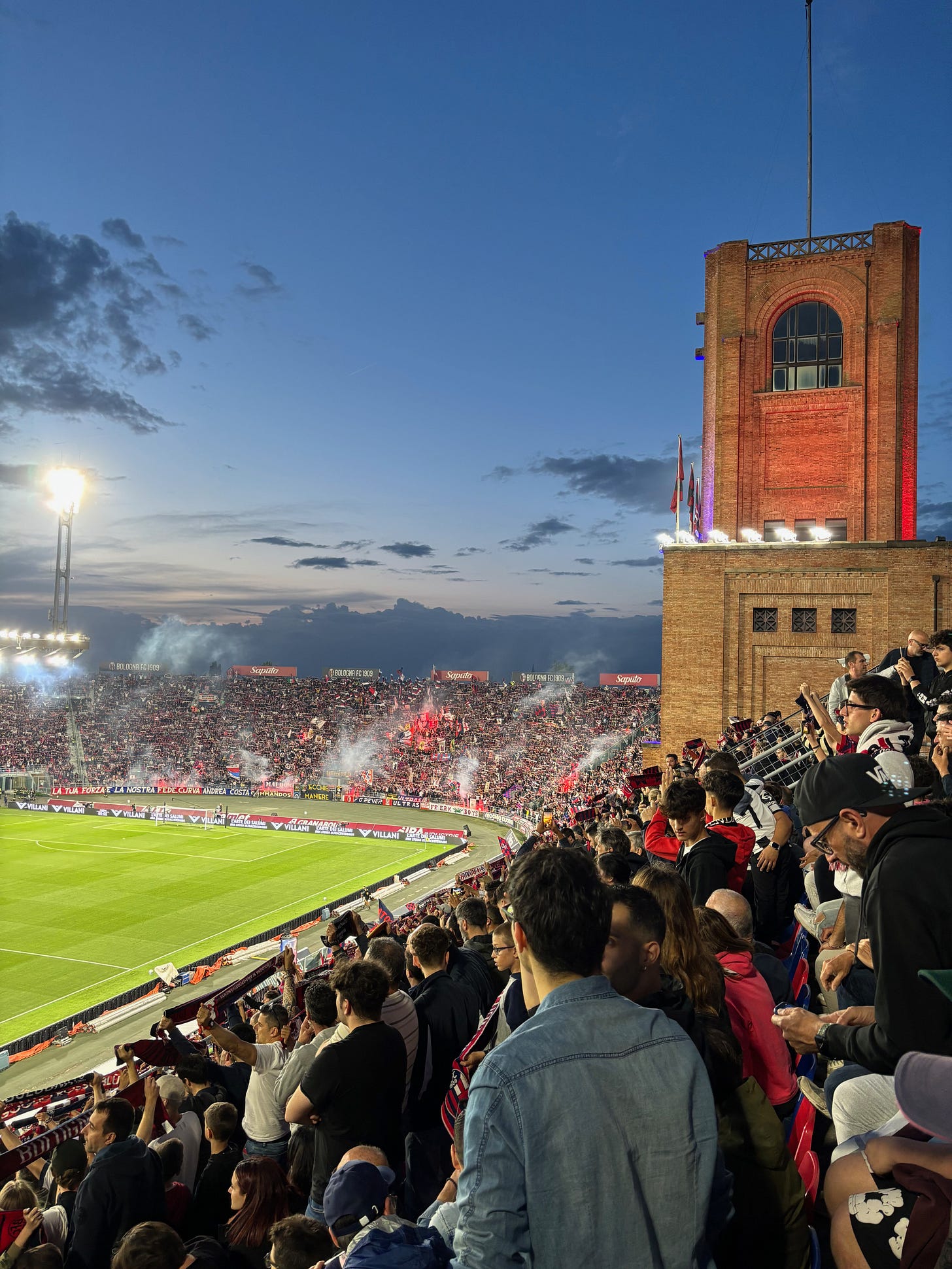Bologna's Football Cathedral Is a Layer Cake of Contradictions
It's a fascist monument that's beloved in a lefty town, and soon it will be transformed once more.
I made the mistake of getting in the concessions line about five minutes into the second half, thinking I could dodge the halftime crowds and get myself a plastic cup of beer — OK, two — without missing much. And then came the roar.
Dashing out to the concrete landing two thirds of the way up the stand, I arrived just in time to witness a festival of passion, skyward fist pumps and cries of “Dai!” all around, and two men — one to the left, one to the right — who’d clambered up onto the piped railings in front of them to howl their approval. The one on the left had torn off his shirt. Bologna FC 1909 had just equalized in a critical match with Juventus to determine who would play Champions League football next season. Now, if Bologna could get another, they’d leapfrog the Old Lady and find themselves in pole position with three matches left to play in Serie A.
From high up in the “Distinti” stand, to the left of the famous tower lodged in it that sets the Stadio Renato Dall’Ara apart, the sound seemed to erupt upward volcanically from the three open-top grandstands: the Curva San Luca to the left; the Curva Bulgarelli to the right, past the tower; and Distinti. Only the Tribuna on the far side, with its owners’ boxes and hospitality seating, is covered with a roof.
Off diagonally to the left, the away support was packed into a narrow section between the Curva San Luca and the Tribuna, and the black-and-whites of Juve were making a right old racket throughout, a constant drumbeat across the 90 minutes that occasionally gave way to soaring choirs of defiant voices singing as one. They were well-marshaled, relentless, proud. Tricky times these may be for the club, but this is still Juventus: 36 times champions of Italy, 15-time Coppa Italia winners, the regal zebras of the peninsula.
They were loud indeed, but in the big moments they were matched by the Curva Bulgarelli. This stand is home to the ultras, an array of groups that includes the Vecchia Guardia — “The Old Guard” — and they had enough flares going to reassure you that you were, indeed, watching Serie A. I was too far away to hear for myself, but I was told they act as conductors for the whole stadium’s orchestra: “Just the Curva, just the Curva,” they might say to give their section a solo. Then: “Tutto il Stadio!” In April, after he laced in a scissor kick deep in stoppage time to defeat top-of-the-table Inter Milan, Bologna forward Riccardo Orsolini jumped all kinds of obstacles to celebrate in front of this stand as the stadium exploded. Even with a six-lane running track ringing the pitch and keeping supporters at a distance, the place gets thunderous.
“The energy of the last couple seasons, it's gorgeous,” said Marco Graziani, who sits with the ultras in the Bulgarelli. Well, he calls it something else. More on that later. But these are fine times for Bologna, glorious even.


